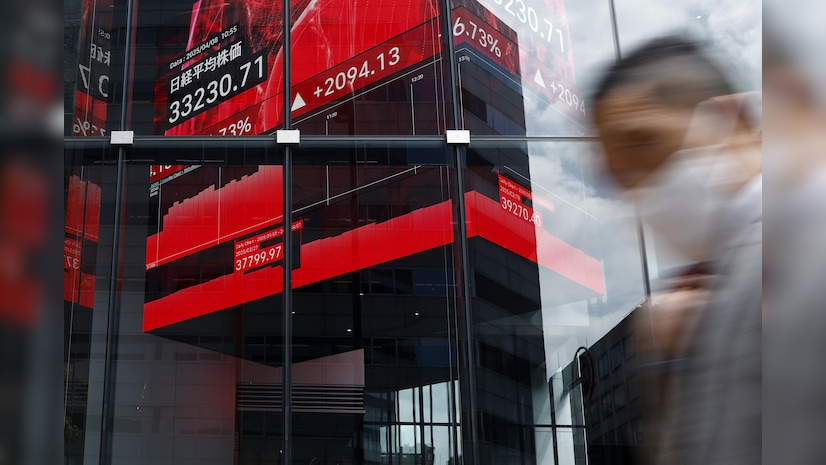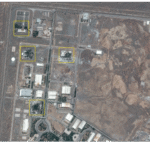The Asia-Pacific markets opened the week on a cautious and turbulent note, with Hong Kong’s Hang Seng Index plunging to the forefront of regional declines. Investor sentiment was heavily influenced by a confluence of global uncertainties: the U.S. Federal Reserve’s recent decision to keep interest rates elevated and escalating geopolitical unrest in the Middle East. The result was a selloff across several key markets, underscoring how deeply intertwined global economic and political developments have become.
While volatility is nothing new in global finance, the scale and complexity of the current environment have heightened anxieties among investors. From inflation signals and interest rate trajectories in the United States to the looming specter of wider conflict in the Middle East, the forces shaping Asia-Pacific equity markets reflect broader global instability. This article explores the reasons behind the market declines, analyzes regional responses, and assesses what lies ahead for investors navigating this challenging terrain.
Hong Kong at the Epicenter of the Downturn
The Hang Seng Index dropped sharply, leading the losses in Asia-Pacific markets. Tech stocks, property developers, and financials were among the hardest hit. Shares of major Chinese firms listed in Hong Kong also saw notable declines, reflecting growing concern about global risk aversion, China’s sluggish economic recovery, and weakening investor confidence in the region.
Despite a series of policy easing measures from Beijing intended to stabilize the property sector and spur domestic demand, skepticism remains about their long-term impact. Foreign investment in Hong Kong and mainland China continues to see outflows, as investors weigh both domestic and international risks.
Moreover, the Hang Seng’s slump is a symptom of broader economic malaise. The lingering effects of China’s prolonged zero-COVID policy, structural weaknesses in real estate, and a soft consumer rebound have all contributed to a fragile market outlook. These factors, compounded by external shocks like Fed policy and regional tensions, have made Hong Kong markets particularly vulnerable.
The Federal Reserve’s Decision and Its Ripple Effects
At the heart of recent investor anxiety lies the U.S. Federal Reserve’s latest decision to hold interest rates steady, with a continued hawkish tone on the possibility of future hikes. Fed Chair Jerome Powell emphasized that while inflation has shown signs of easing, it remains too high for comfort. Markets had been hoping for a clearer signal on rate cuts; instead, they were confronted with a message of prolonged monetary tightening.
For investors in Asia, this is a critical development. A higher-for-longer interest rate environment in the U.S. tends to strengthen the dollar and attract capital away from emerging and Asian markets, leading to currency depreciation and stock market volatility in the region. Central banks across Asia may now feel pressured to maintain tighter monetary stances to defend their currencies and limit capital flight.
Currencies such as the Japanese yen and South Korean won declined further following the Fed’s announcement, while bond yields in several Asia-Pacific economies rose in anticipation of higher borrowing costs.
Geopolitical Pressures: Middle East Conflict Fuels Market Jitters
Adding to the unease is the deteriorating situation in the Middle East. Recent flare-ups involving Israel and Hezbollah in Lebanon, and ongoing unrest in Gaza, have heightened fears of a broader regional conflict. Any escalation risks affecting global energy supplies, with oil prices already trending upward on speculation of disruptions in the Strait of Hormuz and wider instability in the region.
For energy-importing nations in Asia, such as Japan, India, and South Korea, rising oil prices could significantly impact inflation forecasts and balance-of-payment dynamics. Equity markets in these countries responded with declines, reflecting investor concern about increased import costs and slower economic growth.
Moreover, the potential for a Middle East crisis to derail global recovery and investor sentiment is not limited to energy. Broader fears of supply chain disruptions, refugee flows, and military escalation weigh heavily on global risk calculations.
Other Regional Markets Respond with Caution
Beyond Hong Kong, other Asia-Pacific markets also ended lower, though with varied levels of decline. Japan’s Nikkei 225 fell amid concerns over yen weakness and higher U.S. rates. The Bank of Japan is under increasing pressure to address its ultra-loose monetary policy, which has come under scrutiny as inflation lingers above target levels.
In South Korea, the KOSPI edged lower, with tech and semiconductor shares hit particularly hard. Investors remain cautious about global demand for electronics and the knock-on effects of tighter U.S. monetary policy. Similarly, Australia’s ASX saw a modest decline as mining stocks reacted to weaker commodity prices, reflecting concerns about slowing Chinese demand.
India’s Sensex and Nifty 50 indexes also registered losses, though they were more muted. The Indian economy has shown resilience in recent quarters, but analysts warn that persistent inflationary pressure and rising crude oil prices could weigh on corporate earnings in the coming months.
Investor Sentiment: Defensive Posture Returns
The risk-off sentiment that gripped the markets is evident in the movement toward traditional safe-haven assets. Gold prices edged higher as investors sought shelter from volatility. U.S. Treasuries and the dollar also gained, reflecting broader caution and global capital realignment.
Meanwhile, Asian investors are reevaluating portfolios, favoring defensive sectors such as utilities and consumer staples while avoiding more volatile sectors like technology and real estate. Analysts predict that volatility will persist until there is greater clarity on Fed policy and geopolitical developments.
Looking Ahead: What’s Next for Asia-Pacific Markets?
While Asia’s long-term fundamentals remain strong, the near-term outlook is clouded by global uncertainties. Investors will be closely watching a few key factors in the coming weeks:
- U.S. Inflation and Jobs Data: Any data suggesting persistent inflation will likely solidify the Fed’s hawkish stance, adding pressure to emerging markets.
- Middle East Geopolitical Developments: A de-escalation could stabilize oil prices and reduce global risk aversion, while escalation may trigger further market declines.
- China’s Economic Signals: Investors are looking for more concrete signs of recovery, especially in consumer spending and industrial output, before regaining confidence.
- Central Bank Responses Across Asia: Whether regional central banks tighten or hold rates will be critical for domestic currency and capital flow dynamics.
Conclusion
Hong Kong’s steep decline this week is not merely a local phenomenon—it is a barometer of global market anxiety. From uncertain central bank policy in the world’s largest economy to the powder keg of conflict in the Middle East, multiple overlapping forces are testing the resilience of Asia-Pacific markets. In times like these, investors are reminded that markets do not operate in isolation. They are, instead, finely tuned sensors of global risk and opportunity.
As volatility continues, navigating Asia-Pacific markets will require careful attention to geopolitical shifts, monetary signals, and domestic policy responses. For now, caution remains the prevailing mood.










